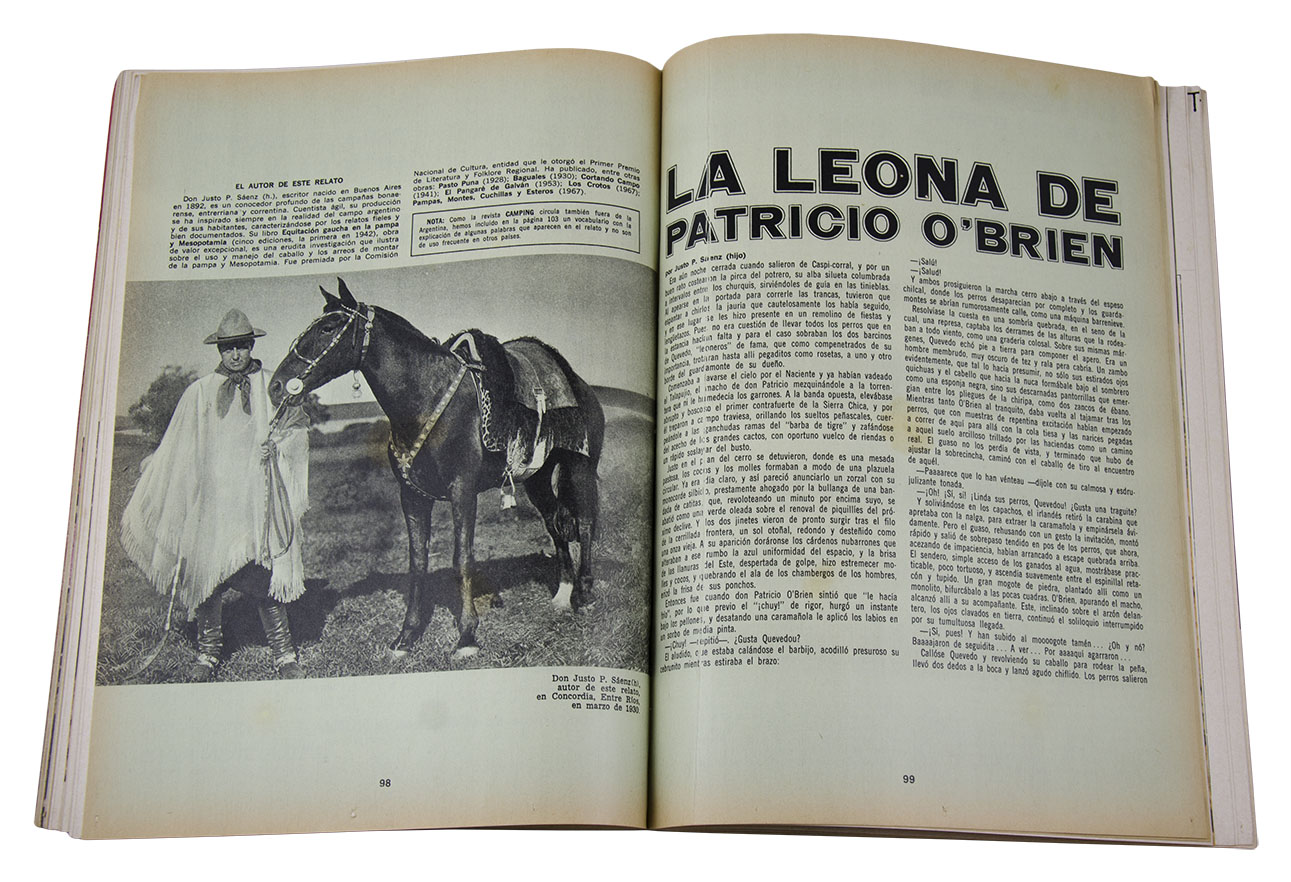He was born in Buenos Aires on December 19, 1892, where he completed his primary studies, secondary studies at the Instituto Libre de Segunda Enseñanza and tertiary studies at the Faculty of Law of the University of Buenos Aires, where he obtained the title of notary public . He practiced his notarial profession in a well-known Notary Public in the capital city and in the Police Minors' Office.
A passionate student of the customs and traditions of the rural environment, he had direct contact with the countryside in Buenos Aires, Entre Ríos, Corrientes, Córdoba and Salta, where during long stays he carefully observed the landscape, the human types and the uses and voices of ancient customs. who still survived. His refuge was the establishment "La Protección" in the Buenos Aires district of General Guido.
Pair of stirrups and fiador, belonging to his coastal tool. SEE MORE
Although his somewhat hurried address detracted from him as a lecturer (he had so much to say!), his magnificent prose as a storyteller can be seen in his numerous books: Pasto Puna (1928), Baguales (1930), Cortando Campo (1941), El Pangaré de Galván (1953), Los Crotos (1966), Pampas, Montes, Cuchillas y Esteros (1967) and Blas Cabrera (1970), posthumous edition published by Paladino Giménez.
He translated into Spanish The Horses of the Conquest by Robert Cunninghame Graham and the work of the traveler Richard Arthur Seymour, published in 1947 under the title Un settler de las Pampas. Life of a rancher on the southeast border of Córdoba between 1865 and 1868, with more than six hundred explanatory notes. He also walked the ethereal path of poetry. He collaborated in newspapers and magazines such as La Nación, Clarín, El Hogar and Caras y Caretas, among others.
Susana Santos Gómez has published her bibliography.
The product of a slow maturation was his project to carry out a complete study on the folk horse riding of the Pampas region (province of Buenos Aires, south of Santa Fe and Córdoba, La Pampa and Río Negro) and the coastal or Mesopotamian region, although they did not escape his interest in the uses and customs of the northern provinces, Cuyo and the central zone, which culminated in his masterpiece, which gave him undying fame: "Gauch horse riding in the pampas and Mesopotamia". A work preceded by twelve years of research and observations on the equestrian uses and customs.
It began with an article that appeared on January 1, 1929 in La Nación and others from mid-1933 in La Prensa. But, enlightened man as he was, he soon realized that his work would be fragile if it was not structured on an organic plan and for that he needed the advice of experts. It was thus that he became involved with two prominent figures, professors Félix F. Outes and Francisco de Aparicio, both from the Ethnographic Museum of the Faculty of Philosophy and Letters, on Moreno Street, who gave him the guidelines that his work should have in order to achieve a technical hierarchy. On the other hand, his friend Alejo González Garaño introduced him to the surprising world of traveler's bibliography. Thus, in 1940 Equitación gaucha en la pampa y Mesopotamia appeared, in volume IV of the Publications of the Ethnographic Museum, in which the author dazzles the reader with his knowledge of the errand and its trappings and accessories, Creole games and equestrian customs. indigenous. A neat academic edition illustrated with old iconography, photographs, ink drawings by Jorge D. Campos and Enrique Amadeo Artayeta. Works of such importance come to light only from time to time.
His most important book: Equitación gaucha… In the fourth edition, from 1959, he expanded the text, the photographs and added an illustrated vocabulary.
Peuser made the first commercial edition in 1942, and had four more by said publishing house, which included illustrations by Eleodoro Marenco.
Other issues caught his attention and his searches for reliable information in old files of the Court Archives should not be forgotten.
In his later years, every Friday a large group of younger men would gather around him in his apartment at 1857 Vicente López Street in the city of Buenos Aires: the anthropologist Julián Cáceres Freyre, the agricultural engineer Alberto Labiano, the painter Eleodoro Marenco, the rope man Luis Alberto Flores, Mr. Normando Carlos Seeber (inspector of estates of the Zuberbühler house), the scholar of gaucho iconography José Paladino Giménez, the commissioner Valentín Espinosa, the judge Enrique de Schuttere, some more, and a lady: “Guelga” Videla Dorna.
He died in Buenos Aires in 1970 at the age of seventy-eight. Don Justo (“Justito” his friends called him) enjoyed a recognized authority and left an invaluable legacy on that inexhaustible world of the Creole.
* Special for Hilario. Arts Letters Crafts
